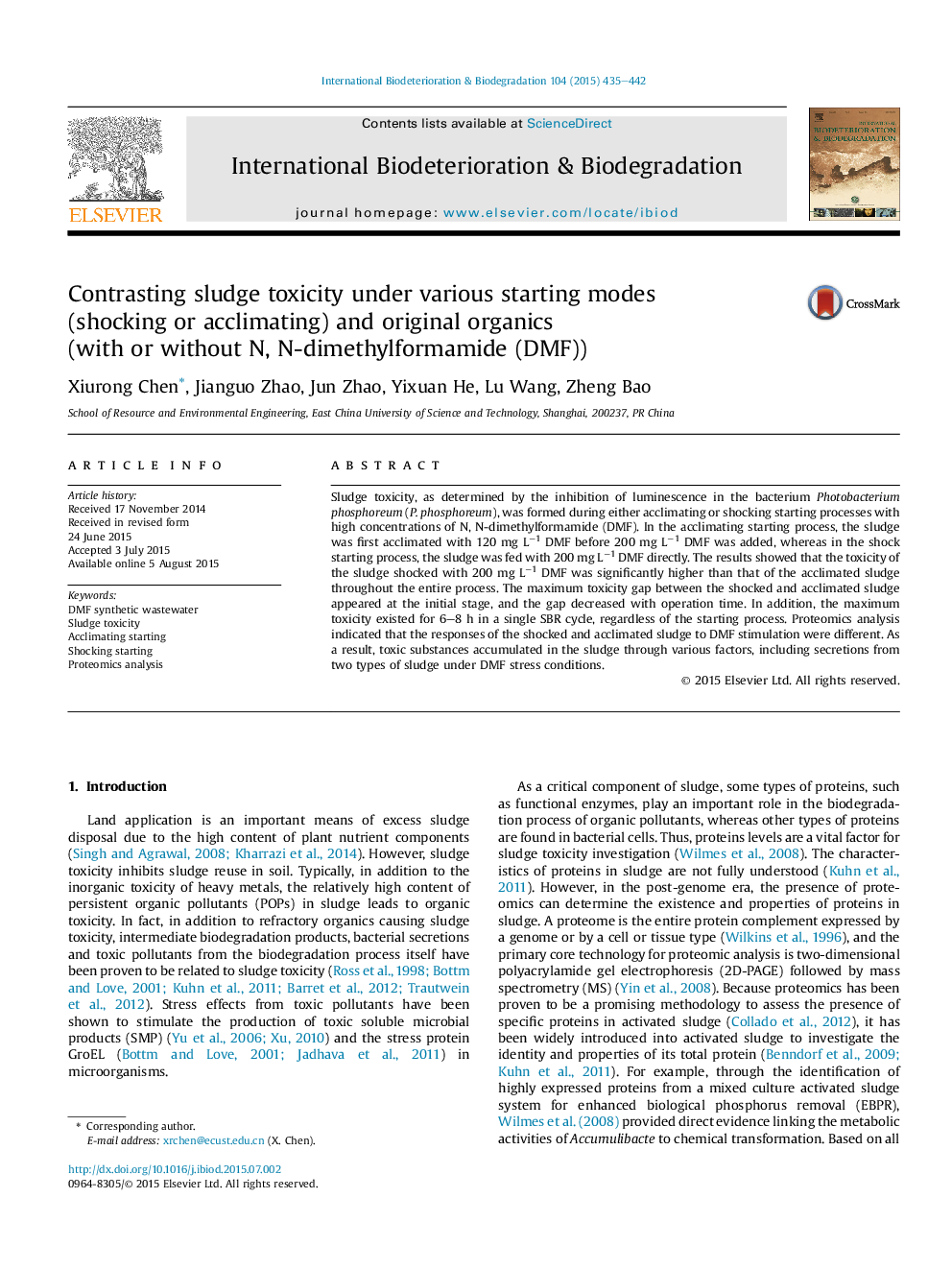| Article ID | Journal | Published Year | Pages | File Type |
|---|---|---|---|---|
| 4364509 | International Biodeterioration & Biodegradation | 2015 | 8 Pages |
•The sludge toxicity formation was evidently influenced by different starting modes.•The shocking starting mode caused more sludge toxicity than acclimating starting mode.•Both incomplete biodegradation of organics and secretions of microorganisms led to sludge toxicity.•The proteomics was closely correlated to sludge toxicity formation.
Sludge toxicity, as determined by the inhibition of luminescence in the bacterium Photobacterium phosphoreum (P. phosphoreum), was formed during either acclimating or shocking starting processes with high concentrations of N, N-dimethylformamide (DMF). In the acclimating starting process, the sludge was first acclimated with 120 mg L−1 DMF before 200 mg L−1 DMF was added, whereas in the shock starting process, the sludge was fed with 200 mg L−1 DMF directly. The results showed that the toxicity of the sludge shocked with 200 mg L−1 DMF was significantly higher than that of the acclimated sludge throughout the entire process. The maximum toxicity gap between the shocked and acclimated sludge appeared at the initial stage, and the gap decreased with operation time. In addition, the maximum toxicity existed for 6–8 h in a single SBR cycle, regardless of the starting process. Proteomics analysis indicated that the responses of the shocked and acclimated sludge to DMF stimulation were different. As a result, toxic substances accumulated in the sludge through various factors, including secretions from two types of sludge under DMF stress conditions.
